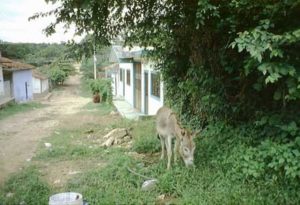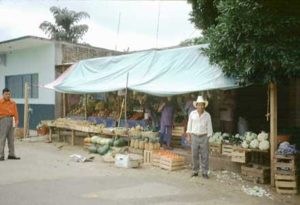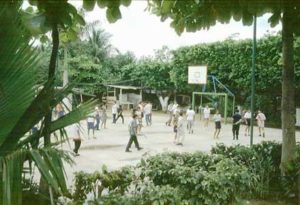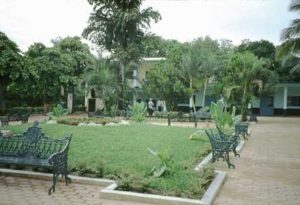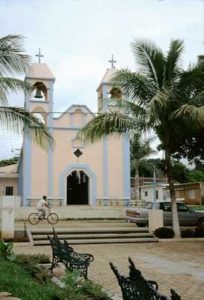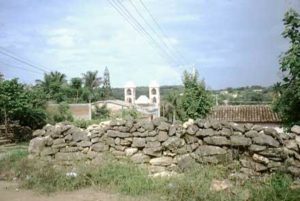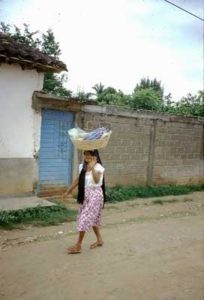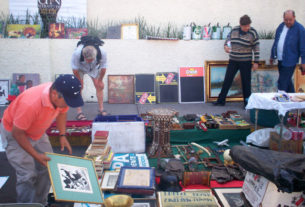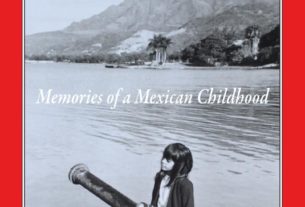The day starts early here in Copoya. Hours before a bright pink sun rises over the eastern mountain, the roosters, pigs, and braying burros compete noisily with horn blowing little colectivos speeding down into the great mercados of the city, slowly awakening below. The much less exotic sounds of dogs barking and kids playing will soon follow.
The bell in the tower of the nearby church clamors, slowly at first, then faster and faster, ringing us all awake with its daily invitation to prayer and perpetual thanksgiving. A loud barrage of firecrackers and exploding rockets pierces the cool morning air and portends another day of celebration for the life we have here.
A large black bird, who regularly roosts in a tree over our house, lands heavily on the thin corrugated aluminum panels which roof our bedroom. He squawks and fusses and whistles as though it were indeed we who have imposed.
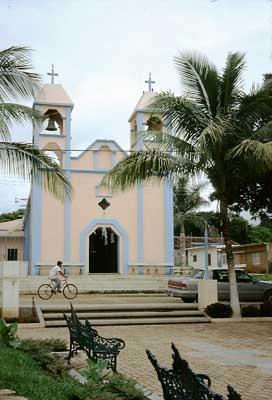
Someone just outside our window shouts a polite request to draw water from our well and we respond sleepily but affirmatively. My husband and I negotiate whose turn it is to make coffee. We must get up and about because today we have guests, and we need to introduce them to our world.
Our world, Copoya, Chiapas, is a Zoque Indian village located in the mountains, approximately 15 kilometers south of Tuxtla Gutierrez, a clean, sprawling business-like city boasting numerous modern amenities. Tuxtla became the capital of Chiapas in 1892, following a bloody battle at the former capital of San Cristobal de las Casas, when the government administration was moved to a location less dramatic in its historical antecedents.
While the sign at the turn-off from the Villaflores Highway suggests a population of only 4000 people, Copoya is growing quickly.
. . .and where in the world is “Chiapas”?
Chiapas is the southernmost state in Mexico. Until 1824 it was a part of Guatemala and even now it retains close ties with Central America, perhaps closer in many ways than with Mexico. The economy of Chiapas is primarily agricultural. With no factories belching noxious gases into the clear skies or dangerous chemicals being pumped into its rushing rivers and deep blue lakes, the area is beginning to attract more and more tourists who want to experience a land not only of unmatched pristine beauty and ancient archaeological wonders, but one of serious ecological awareness as well.
Chiapas is traditionally known as the land of gushing waterfalls, verdant and mysterious jungles, imposing Mayan ruins, proud and colorful–if sometimes rebellious–indigenous peoples, breath-taking mountain overlooks, and beautiful arts and crafts. It is also an important gateway to Guatemala and other Central and South American countries.
And with the recent advent of computers and modern telecommunications, most of the state is moving rapidly into the 21st century, right along with the rest of Mexico.
But I heard there is a war going on. . .
In spite of the sensationalized media reports and other official advisories warning that this entire region is in a dangerous state of insurrection and political anarchy, my family feels safer here than we ever did during the years we lived in Houston, Texas. A wide-spread but patient and polite military presence provides security and stability for tourists and residents alike. Local police and armed private guards also help keep the peace which those of us who live here expect and enjoy.
. . .and who are the Zoques?
The Zoque Indians are a relatively small and not well known indigenous tribe whose original territory ranged from the Tabascan city of Villahermosa southward through the Isthmus of Tehauntepec into the central area of Chiapas, slightly west of what is now called “Mundo Maya,” the tourist route through the world of ancient Mayan civilizations.
Current enclaves of the remaining Zoques include the tropical town of Chiapa de Corzo on the Rio Grijalva, about 12 kilometers east of Tuxtla, from which boats regularly embark, taking awed tourists through the spectacular Sumidero Canyon.
Other Zoque concentrations may still be found in Teran, once an independent village and now a colonia of the capital adjacent to the regional airport; and in Copoya, where I live with my husband and our two teenage daughters.
So what is Copoya really like?
Copoya itself is an interesting blend of the ancient and the new, of pre-Conquest religion and Catholicism, of traditional architecture and imported capitalism. It is a place where color televisions and multi-speakered stereos share space with outdoor clay ovens. The roofs boast an interesting combination of homemade antennas, wooden crosses, and high tech satellite dishes.
Electric blenders have long since replaced traditional stone molcajetes for preparing moles, but canned fruits and vegetables have made no dent in the local preference for produce which is dependably fresh, tasty, and beautiful. Not to mention readily available.
In Copoya the multi-level cosmetics business has at least one very busy representative. The customer who buys these expensive lipsticks and perfumes, wears them as she slops her pigs and dresses out her chickens. She also wears a pretty pastel dress protected by a crisply ironed apron or smock. Her daytime jewelry is a pair of 18-karat antique gold earrings and an impressive gold necklace to match. Think June Cleaver here, a beautiful and formal but barefoot housewife in whom her family takes great pride.
The sales representative herself is similarly attired. And following her weekly obligatory presentation of new products, she always asks if we have any stale tortillas or other food scraps which she can take home to her own pigs and chickens.
The streets are still red dirt which washes down toward the urban valley during heavy rains, revealing a layer of large loose rocks. This is the “good news, bad news” thing. Bad for those who drive old VW bugs, great for those who need unlimited access to free building materials.
Beneath the streets of Copoya run new lines for a modern sewer system and municipal water direct from the capital. On the other hand, few people here can afford the connection fees for these services–or else they are wisely content with the more traditional and ultimately more dependable ways of doing things. Thus most of the villagers simply continue to use the deep wells scattered throughout.
Copoya which have provided cold, clear, and clean water for generations. Bathroom facilities can be a discreet separate room just off the patio–or wherever you are, whenever you need to go.
While outsiders may see only the relative poverty of Copoya, there is none of the depressing spectre of filth and human degradation too often present in many urban areas of Mexico and poorer Central American countries. The real problem here is an abundance of rich natural resources unfortunately coupled with a lack of hard currency.
As the neighbors explain, “We have our land, we have our corn, and we have our animals. But we don’t have pesos.”
To combat this problem, some of the men work in the city, mostly in low-paying manual jobs, but since almost every family here owns its own house with an acre or so of fertile land, it really does not take much cash to live comfortably on the same scale as the neighbors.
Many of the women operate specialty stores from their living rooms. Petroleo (kerosene), cervezas (beer), pollos frescos (free-range chickens caught, killed and cleaned while you wait), baby blankets and eyebrow tweezers can all be purchased within a couple of blocks of our house. Vendors selling everything from pig’s hearts and honey to regional breads and woven shopping bags stop at my door each day. Truly, this is a convenience my mother missed out on, but which my grandmother enjoyed as a housewife in the United States during the 1940’s!
How would I summarize my daily life in Mexico?
Happiness and hard work, good food and fiestas, music and marimbas, gorgeous flowers and friendly neighbors. And because of the inherent generosity and obvious community pride of the people of Copoya, we are permitted to share this wonderful life with them.
During the coming months I will share the very special ambiance of Chiapas with all the on-line readers of MexConnect.

